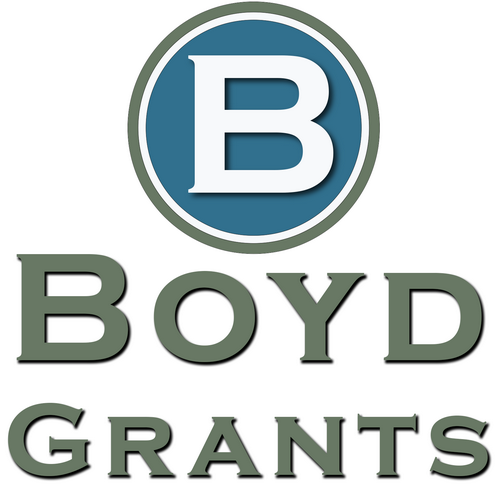It’s easy to focus on crafting the perfect proposal—meticulous planning, well-articulated goals, and a flawless budget. But none of that matters if your application doesn’t meet the basic requirements or is missing key documents. Many grant proposals are rejected before they even get to the review stage, and the reason is often simple: they fail to meet eligibility criteria or lack necessary materials.
To give your proposal the best chance of success, it’s critical to ensure eligibility and completeness. Here’s why these factors are so important and how you can ensure your proposal passes the first screening.
1. Missing Documents = Automatic Rejection
Grant funders have specific requirements that must be met in order for your application to be considered. If you forget a single required document—whether it’s a tax-exempt status form, a budget template, or a letter of support—your proposal could be disqualified immediately, no matter how strong your project may be.
This is especially true for competitive grants where funders receive a large volume of applications. Reviewers don’t have time to track down missing documents or clarify details; they will simply move on to the next submission.
Make sure you’ve thoroughly reviewed the list of required documents in the RFP or grant guidelines. It’s also a good idea to double-check the submission platform to confirm that all files are uploaded in the correct format.
2. Understand the Eligibility Requirements
Eligibility is another key hurdle that many applicants fail to clear. Funders often have specific criteria for who can apply for a grant, such as organization type, location, or the focus of the proposed project. For example, some grants are only available to nonprofit organizations, while others may be restricted to educational institutions or government entities.
Eligibility also includes specific focus areas. If the funder is prioritizing projects that address diversity, equity, and inclusion (DEI), for instance, and your project doesn’t align with this, it could lead to a rejection even if all other aspects are perfect.
It’s essential to read the eligibility requirements thoroughly and ensure your project aligns with them. If you’re unsure about whether your organization qualifies, reach out to the funder’s program officer for clarification.
3. Use a Checklist Before Submission
A simple yet highly effective way to ensure completeness and eligibility is to use a checklist. Before you hit “submit,” create a checklist that includes:
- Eligibility Criteria: Does your project align with the funder’s stated goals and priorities? Are you in the right category (e.g., nonprofit, educational institution)?
- Required Documents: Have you included all necessary forms, reports, letters of support, or certifications?
- Formatting and Submission Guidelines: Is your proposal in the correct file format (PDF, Word, etc.)? Does it meet any page or word count limits?
- Signatures and Authorizations: Have all necessary parties signed the required documents?
A checklist will not only help you stay organized but also ensure that no small but crucial detail gets overlooked.
4. Common Eligibility Mistakes to Avoid
Many applicants fall into common traps when it comes to eligibility. Here are a few mistakes to watch out for:
- Overlooking Geographic Restrictions: Some grants are only available to applicants in certain geographic areas. Double-check that your location matches the eligibility requirements.
- Ignoring Purpose or Focus Areas: If the grant is focused on a specific issue—such as climate change, healthcare, or education—make sure your project falls within that focus. If it doesn’t, your application may be rejected outright.
- Missing Registration Requirements: Some funders require applicants to register their organization in advance through a specific portal or database (e.g., Grants.gov, SAM.gov). Missing this step can disqualify you before your proposal is even reviewed.
Take the time to fully understand and meet eligibility requirements to avoid wasting valuable time on an application that’s doomed from the start.
5. The First Screening Is Critical
Once your grant is submitted, the first step is often a basic screening to ensure eligibility and completeness. If you fail this initial screening, your proposal won’t make it to the full review stage. This means that regardless of the quality of your proposal, it may never have the chance to be evaluated for funding.
Funders don’t want to waste time on proposals that don’t meet the basic requirements. If your application isn’t complete or your organization doesn’t meet the eligibility criteria, it will be immediately disqualified, and the reviewers won’t even see it.
By ensuring that you meet all eligibility criteria and submit a complete application, you give your proposal a fighting chance in the review process.
6. The Bottom Line: Double-Check Everything
It’s easy to get caught up in the excitement of crafting a well-written proposal, but remember that the details matter—especially when it comes to eligibility and completeness. Always take the time to thoroughly review the application requirements and double-check that all documents are included.
A checklist can be an invaluable tool in making sure you haven’t missed anything. Ultimately, a perfect proposal is worthless if it never makes it past the first screening due to missing documents or misunderstood eligibility requirements.
Don’t Let Your Proposal Get Rejected on a Technicality
Eligibility and completeness are the foundation of a successful grant application. Don’t let your proposal be one of the many rejected before it even gets reviewed. Double-check your eligibility, ensure that all required documents are included, and use a checklist to stay on track. A well-prepared proposal that meets all requirements has a much better chance of success—and that’s the first step toward securing the funding your project deserves.


Recent Comments